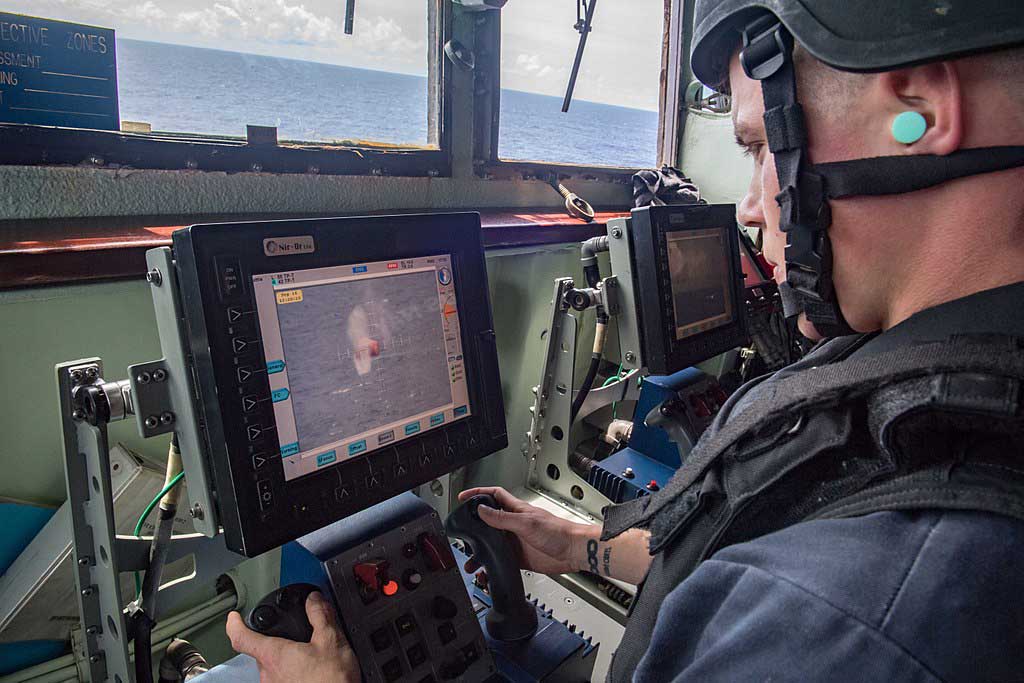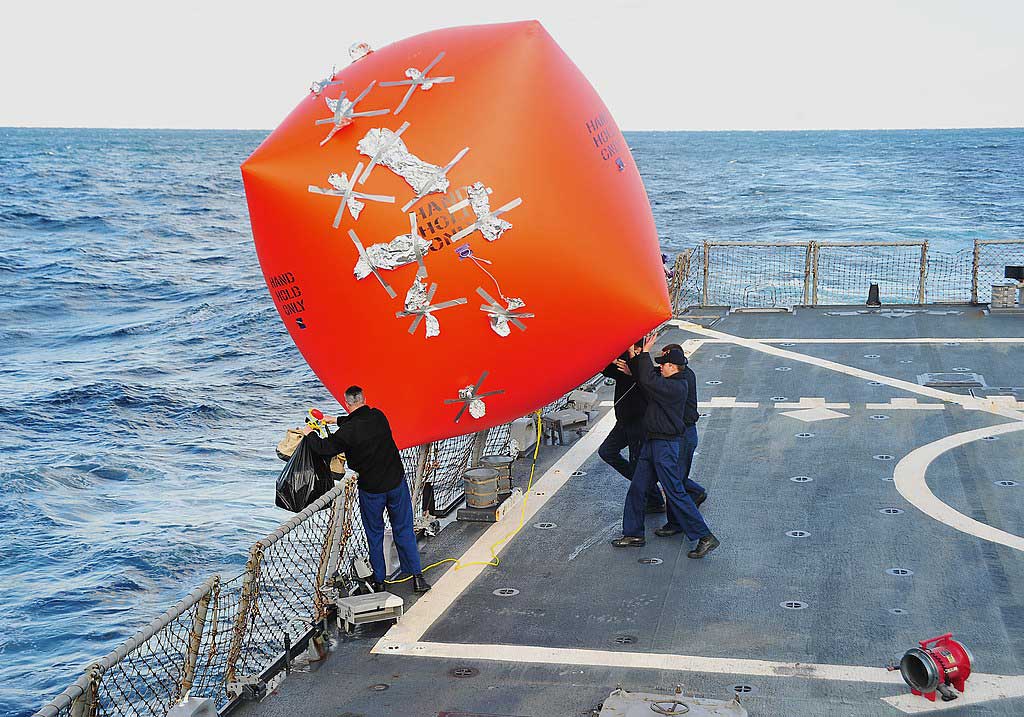
The Indian Navy just deployed a ‘Killer Tomato’ for target
practice.
Those unfamiliar with the strange term, read on.
A ‘Killer Tomato’ is an inflatable target that sits on the water, much like a
‘buoy’ you see at the boat races. It is used in live-fire exercises to
calibrate the existing weapons, test new weaponry, and so forth.
You can see a Gunner’s mate from the US Navy locking in on a Killer Tomato
from a console.

© Naval Surface Warriors, CC BY-SA 2.0
It allows the testing of both small arms and missiles.
What Are They Made of?
Killer Tomatoes are made of Polyvinyl Chloride (PVC). The material is chosen
for several reasons.
Not only does the target balloon not deflate with one or two shots from
small-arms, but it can withstand several rounds, depending on its make.
The material is also chosen for its sturdiness and elasticity. It must be
folded and stored away until its use, and it must also have a long shelf life.
When deployed, the material must be able to withstand the temperatures on the
ocean.
By the way, since you know they have nothing much to do with actual tomatoes,
you would appreciate the fact that not all of them are round.
The Killer Tomato comes with a rope (floating trip line) tied to the
practicing ship and can be dragged back after being hit and deflated, thus
avoiding any pollution of the sea.
If not retrieved, the target must sink. Where a navy conducts its tests is
generally a guarded piece of information.
Even if it did sink, the PVC does not degrade anytime soon. However, new
research is being led into biodegradable materials.
How Do Missiles Find Them?

The Killer Tomatoes have aluminium reflective tape attached to them for the
radars to spot them.
In the Indian Navy’s Picture, you can see the shiny spots on the Killer
Tomato.
In the picture below, the US Navy can be seen deploying a Killer Tomato with
Aluminum stickers.

© U.S. Navy photo by Mass Communication Specialist 3rd Class Jesse L.
Gonzalez
Some of the Killer Tomatoes even emit radio frequencies. It depends on what
kind of live-fire exercise the naval forces have in mind.

 © Naval Surface Warriors, CC BY-SA 2.0
© Naval Surface Warriors, CC BY-SA 2.0

 © U.S. Navy photo by Mass Communication Specialist 3rd Class Jesse L.
Gonzalez
© U.S. Navy photo by Mass Communication Specialist 3rd Class Jesse L.
Gonzalez


